#charles cowden clark
Text
Shakespeare Weekend
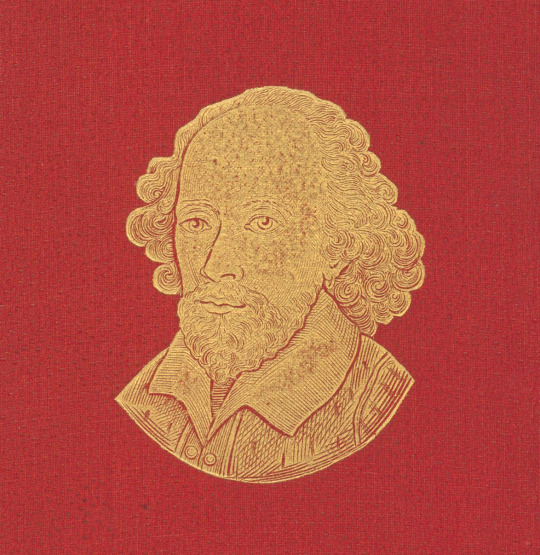

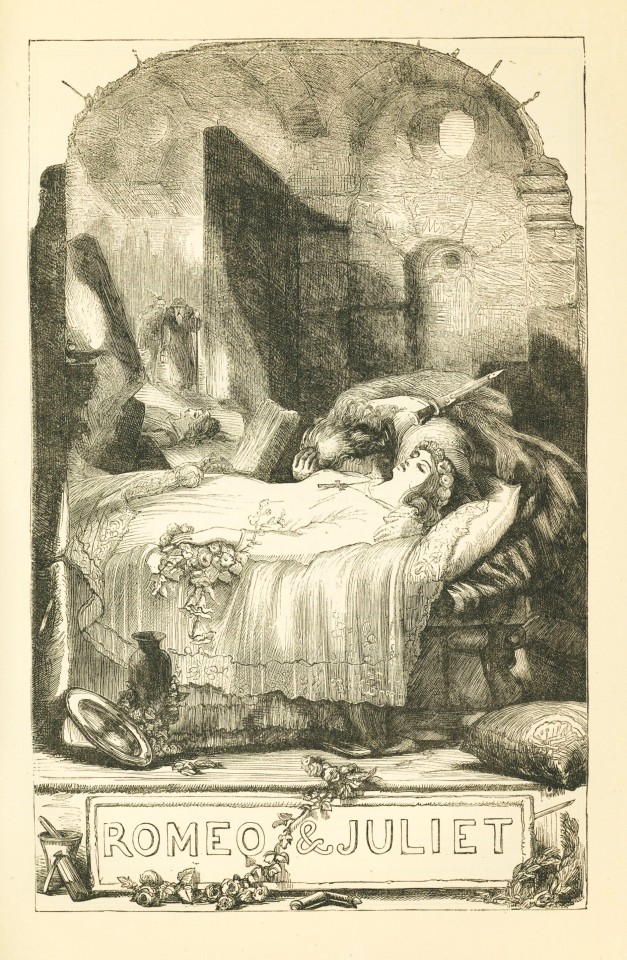

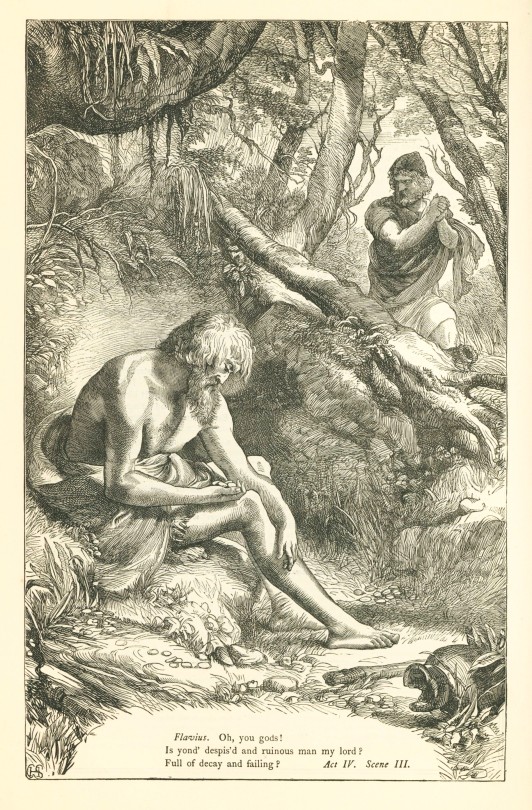

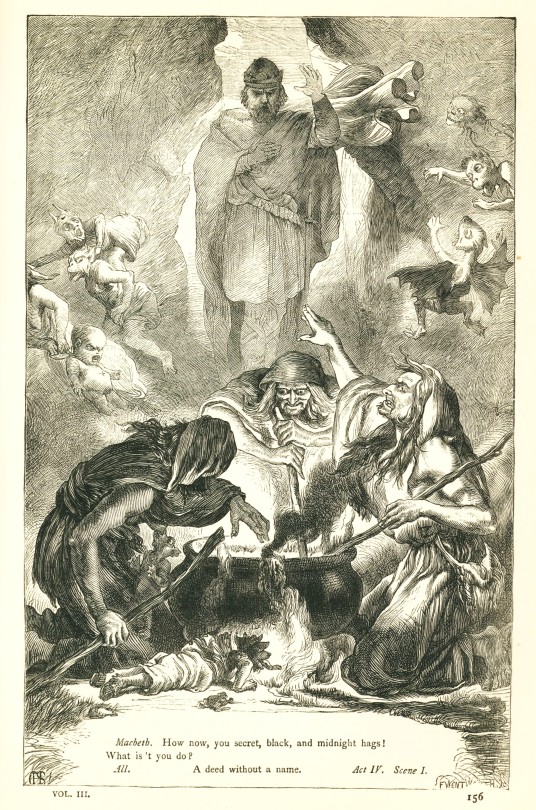
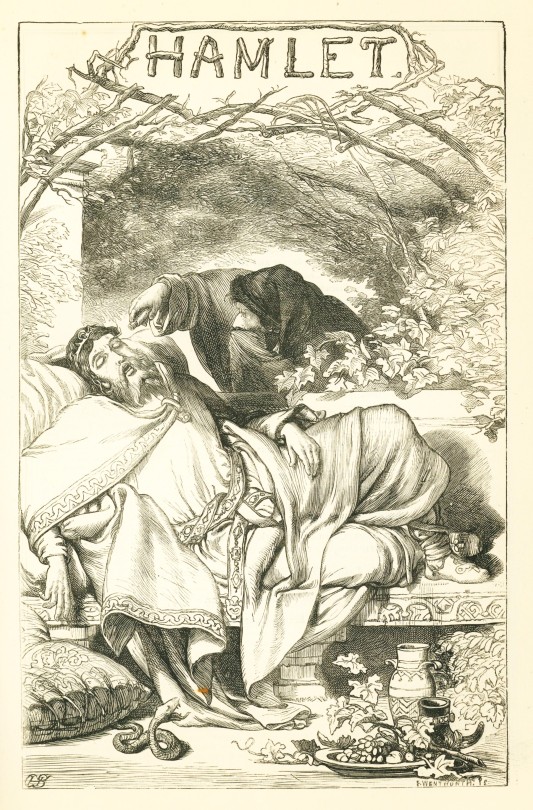
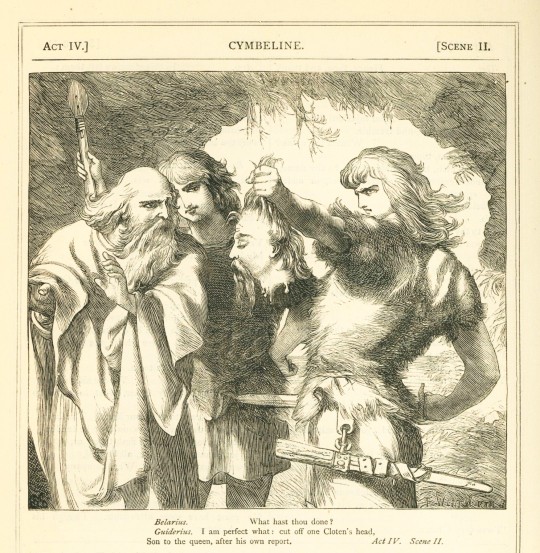

Volume Three of The Plays of Shakespeare published by Cassell, Petter, Galpin & Co. in the mid to late 1860s finishes off the set with a collection of Shakespeare’s tragedies and The Story of Shakespeare’s Life written by editors Charles (1787-1877) and Mary Cowden Clark (1809-1898). Similarly to Cowden Clark’s annotations, The Story of Shakespeare’s Life is written for an audience new to Shakespeare and is a thorough account of his life, heralding him as a “shining example to the whole human brotherhood”.
Englishman Henry Courtney (H.C.) Selous (1803-1890) illustrated all three volumes with his distinctive attention to minute detail and dense landscapes. Following his father’s portrait and miniature painting career, Selous attended the Royal Academy in 1818 where he exhibited his first work Portrait of a Favourite Cat. Twenty-two years later he would switch gears into historical painting and never look back. His illustrations for The Plays of Shakespeare add an emotive visual layer to the plays, benefiting young and novice readers who may not have experienced Shakespeare in a theatre.
The Plays of Shakespeare are a collected edition of the serialization of plays originally published in one of Cassell, Petter, & Galpin’s weekly papers over the course of many years. Met with great success, some seventeen editions have been published. Our early copy is half-bound in red leather with Shakespeare’s portrait embossed in gold on the cover.
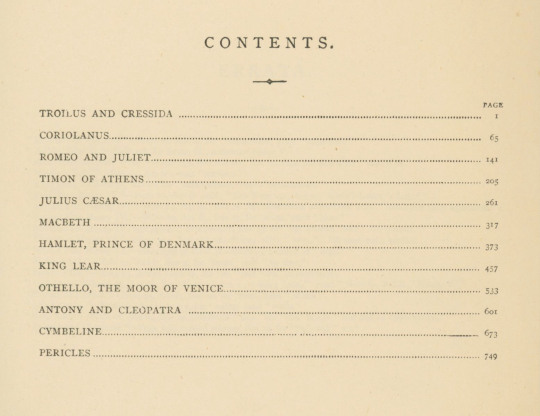
View more Shakespeare Weekend posts.
-Jenna, Special Collections Graduate Intern
#shakespeare weekend#william shakespeare#shakespeare#the plays of shakespeare#charles cowden clark#mary cowden clark#h.c. selous#cassell petter galpin & co.#illustration#wood engravings
17 notes
·
View notes
Text
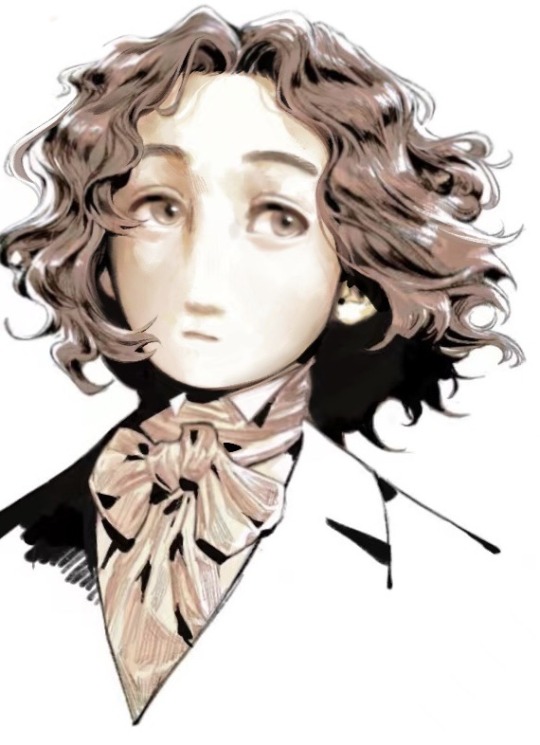


Here some doodles of John Keats that I did a while ago
And Gosh I know I’m late but for real is this fandom still alive? (Please feel free to pc me I’m in desperate need of mutuals ;)
#john keats#Yes I’m obsessed with Keats in 2023#Better late than never#romantic poets#Honestly is this fandom still alive#poetry#romanticism#P3 is Charles Cowden Clarke just read any Keats biography and you’ll fall in love with the dynamic between him and Keats…They are ADORABLE#I ship them#It’s rather hard capturing his facial features#doodles#historical fanart#19th century#Portraits#literature#i guess#I'm adding all these tags for the sake of finding mutuals…#Charles Cowden Clarke
53 notes
·
View notes
Photo

John Keats to Charles Cowden Clarke (London, October 31, 1816)
2 notes
·
View notes
Text
Discus elbow smash
◊ TOM
◊ ANGEL
◊ BEN JONSON
◊ FRANCIS BACON
◊ SHAKESPEAREAN
◊ JEFF
◊ MARK
◊ EARNEST
◊ DICK
◊ SUSANNA
◊ YOUNG SHAKESPEARE
◊ REMARK
◊ MR. JUSTICE
◊ RICHARD H. DANA
◊ BRET HARTE
◊ HARRY
◊ MAY ASSUME
◊ YOUNG SHAKESPEARE'S
◊ LORD ELDON
◊ ANNE HATHAWAY
◊ PROFESSOR OSBORN
◊ SIR THOMAS LUCY
◊ RICHARD GRANT WHITE
◊ GRACE
◊ WILLIAM SHAKESPEARE
◊ LORD CAMPBELL
◊ SIR THOMAS LUCY'S
◊ MR. BARCLAY
◊ CHARLES
◊ MR. SIDNEY LEE
◊ SIR THOMAS
◊ ANNE WHATELEY
◊ FLETCHER
◊ SENATOR DAVIS
◊ MARY COWDEN CLARKE
◊ NELSON
◊ LEE
◊ LOUIS
◊ CLAY
◊ BLOSSOM
0 notes
Text

MANY HAPPPY RETURNS OF THE DAY! A BIRTHDAY BOOK by Charles and Mary Cowden Clarke (London: Lockwood, c.1869) Coer designed by W.H. Rogers.
#beautiful books#books books books#book blog#books#book cover#victorian era#old books#vintage books#birthday
0 notes
Text
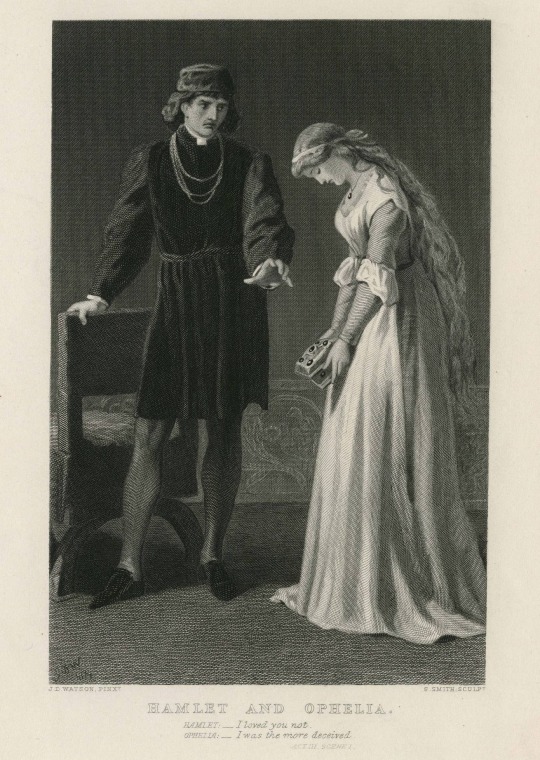
Hamlet and Ophelia
Painted by J D Watson, engraved by S Smith
Hamlet (Act III, Scene 1)Hamlet: "I loved you not." Ophelia:" I was the more deceived."
Cowden-Clarke, Charles and Mary, eds. The Plays of William Shakespeare. The Tragedies.
Illustrator: H.C. Selous. London: Cassell, Petter, Galpin and Co.
c. 1830.
10 notes
·
View notes
Note
I'm curious now, what are your top "things said about keats"? :D
so many things his contemporaries have said!! the tone in which they write about keats is often quite touching, because it vacillates so easily between fondness and familiarity and adoration and puzzlement. some examples (starting with my favourite):
“In all my knowledge of my fellow-beings, I never knew one who so thoroughly combined sweetness with the power of gentleness and the irresistible sway of anger as Keats.” (Charles Cowden Clarke)
“He was below the middle size, with a low forehead and an eye that had an inward look perfectly divine, like a Delphian priestess who saw visions.” (Benjamin Robert Haydon)
“I can never forget the wine-like luster of Keats's eyes, just like those of certain birds which habitually front the sun.” (Joseph Severn)
“I cannot tell you how much every one have exerted themselves for him, nor how much he is liked [...] I am certain he has some spell that attaches them to him, or else he has fortunately met with a set of friends that I did not believe could be found in the world.” (Fanny Brawne, to Keats’s sister)
“I am aware indeed that I am nourishing a rival who will far surpass me, and this is an additional motive & will be an added pleasure.” (Percy Bysshe Shelley)
“Star of high promise, not to this dark age / Do thy mild light and loveliness belong” (An anonymous letter to Keats that included a sonnet and a donation. Keats, himself allergic to praise and slightly offended at being called mild and lovely, was incredibly embarrassed by this.)
#for every time a contemporary has said sth uniquely horrible about keats#(cough byron cough but he's really not the worst of it)#you get like ten quotes in this vein#he was so loved!! this is the man who literally said ''i could not live without the love of my friends''! ahhhh#asks#anon#keats#romanticism chats
42 notes
·
View notes
Photo

The Plays of William Shakespeare / Edited and Annotated by Charles and Mary Cowden Clarke, 1864–1868
24 notes
·
View notes
Quote
Keats gave a signal example of his courage and stamina, in the recorded instance of his pugilistic contest with a butcher boy. (...) The brute, he said, was tormenting a kitten, and he interfered; when a threat offered was enough for his mettle, and they “set to.” He thought he should be beaten, for the fellow was the taller and stronger; but like an authentic pugilist, my young poet found that he had planted a blow which “told” upon his antagonist; in every succeeding round, therefore (for they fought nearly an hour), he never failed of returning to the weak point, and the contest ended in the hulk being led home.
Charles Cowden Clarke on John Keats, from Recollections of John Keats.
33 notes
·
View notes
Photo
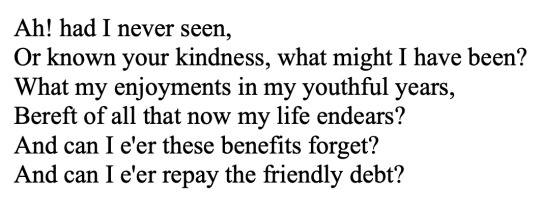
John Keats. “To Charles Cowden Clarke.”
2 notes
·
View notes
Photo

On this day in history, 9 April 1483, King Edward IV of England died. He had been king of England for twenty-two years, barring a six month period when his predecessor, Henry VI, briefly resumed his kingship. The first Yorkist king of England, Edward's first reign (1461-70) was marred by violence and continuing political and dynastic tensions, his fallout with the 'Kingmaker' earl of Warwick, and the continuing threat from the Lancastrians. But his second period of kingship, 1471-83, was comparatively more successful and can be termed a period of peace.
Edward had fell ill soon after March 30th, made a short recovery and died on April 9th. The cause of his death has been attributed to, amongst other things, pneumonia, thyphoid and appendictis. According to Mancini he “allowed the damp cold to strike his vitals, when one day he was taken in a small boat, with those whom he had bidden go fishing, and watched their sport too eagerly”. The account of the Croyland Chronicler reveals that the court was baffled by Edwards illness; when the king took to his bed, he was ‘neither worn out with old age nor seized with any known kind of malady, the cure of which would not have appeared easy in the case of a person of more humble rank’.
By his will, dated 1475, he desired to be buried “in the church of the Collage of Saint George within owre Castell of Wyndesour, by us begoune of newe to bee buylded.’ He was to be buried in a vault with a chapel or closet over it with space for an altar, and tomb with his figure of silver and gilt; or at least of copper and gilt. The will further provided for a chantry of two priests, and for a company of thirteen poor bedesmen to live within the college.” Edward IV was duly buried in St. George’s chapel, Windsor Palace, in 1483.
Pictured: King Edward IV ill from "The Plays of William Shakespeare ", edited and Annotated by Charles and Mary Cowden Clarke, illustrated by H. C. Selous, 1864–68
106 notes
·
View notes
Text
Shakespeare Weekend
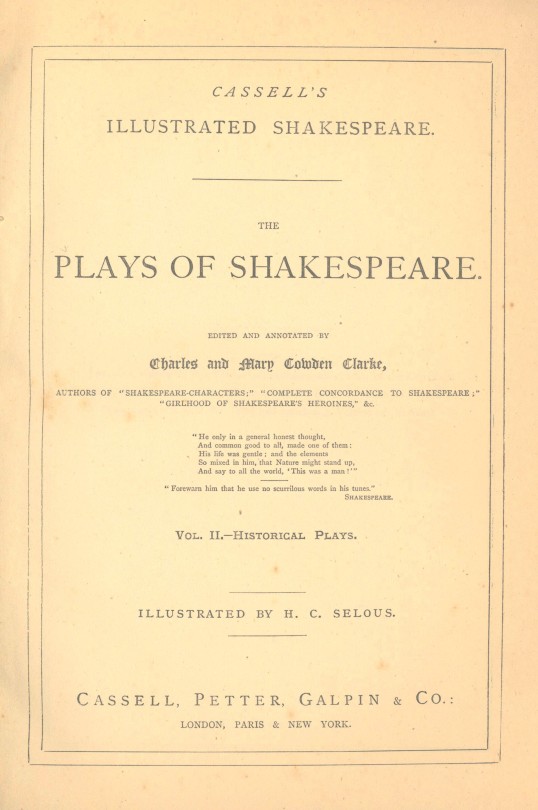

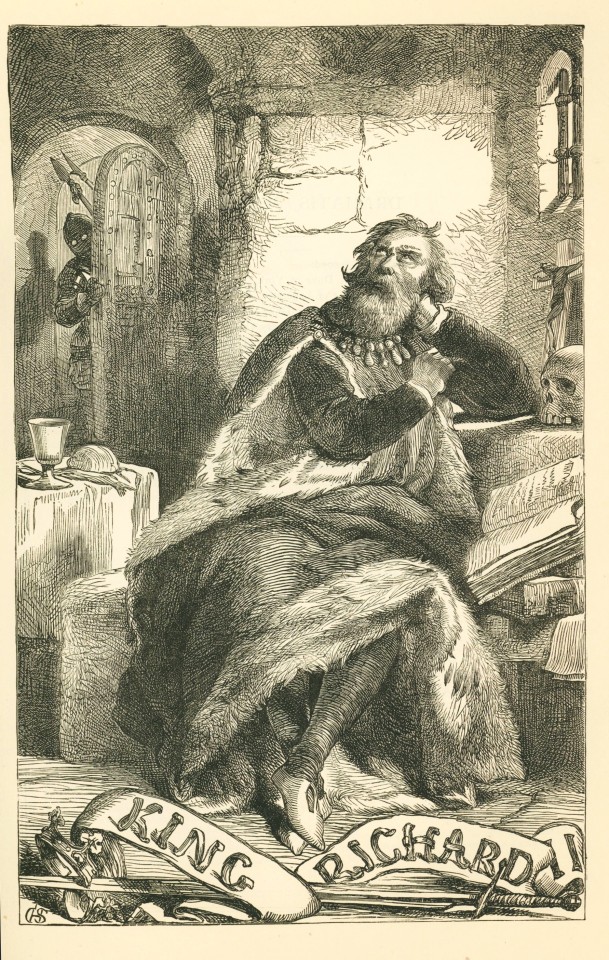




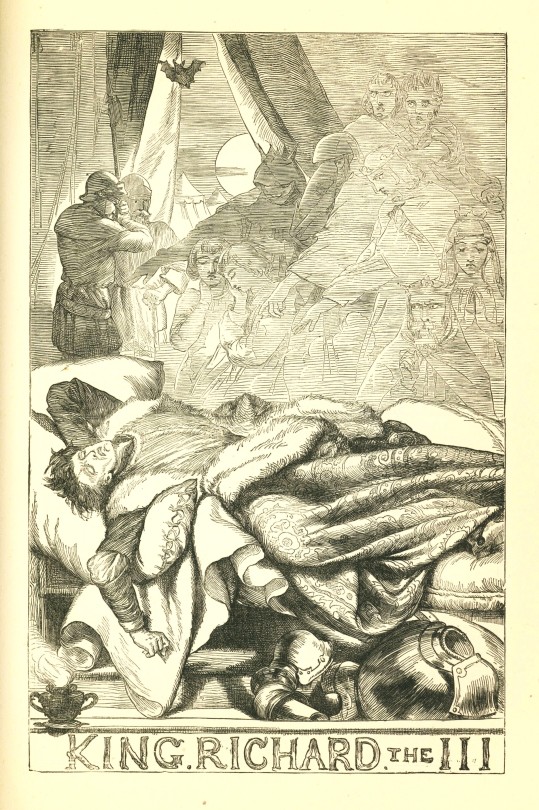

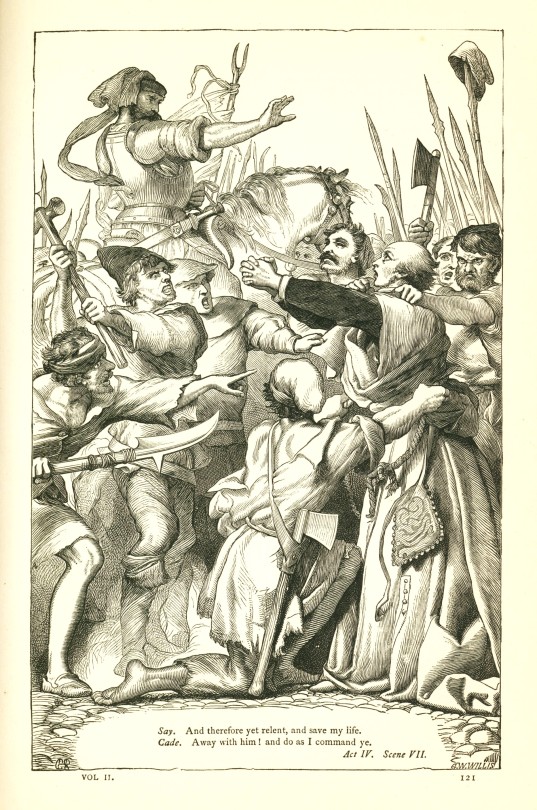
The Plays of Shakespeare was published by Cassell, Petter, Galpin & Co., likely in the late 1860s or early 1870s and consists of three volumes each arranging the plays into comedies, histories, and tragedies with many illustrations as Cassell's Illustrated Shakespeare. Englishman John Cassell (1817-1865) was a tea and coffee merchant who pivoted into publishing in 1848 with the weekly newspaper The Standard of Freedom and expanded to the Illustrated Family Paper in 1853. When Cassell was unexpectedly called to pay back an advancement to his paper supplier, he turned to printing firm partners George Petter (1823-1888) and Thomas Galpin (1828-1910) for financial support. The three men went into a full partnership in 1859 and found great success in publishing illustrated editions of classic literature, including the popular Illustrated Family Bible.
It is from their illustration craze that The Plays of Shakespeare was born. Edited and annotated by Charles (1787-1877) and Mary Cowden Clark (1809-1898) and illustrated with wood engravings from drawings by H.C. Selous (1803-1890), the three-volume collection is brimming with detailed illustrations of the plays geared toward families and young readers. Volume Two contains Shakespeare’s historical plays.

View more Shakespeare Weekend posts.
-Jenna, Special Collections Graduate Intern
#shakespeare weekend#william shakespeare#shakespeare#the plays of shakespeare#cassell petter galpin & co.#john cassell#charles cowden clark#mary cowden clark#h.c. selous#Henry Courtney Selous#illustrations#wood engravings
19 notes
·
View notes
Text


No one made this so I did (?
Basically, Clarke(Keats’s friend/mentor) told Keats that his stomach wasn’t feeling well. Keats, (being his nymph-self) demonstrates how the organ works by “being like a brood of callow nestlings (opening his capa cious mouth) yearning and gaping for sustenance.”
This expert is from ‘Recollections of Writers’ 1878 by Charles Cowden Clarke (pg.132) you can read it on archive.org It has a TONE of precious Keats moments…
#john keats#protect the child#this man was 5 feet tall#Keats being his veterinarian self#does anyone ship Keats and Clarke here they r just absolutely adorable in every single Keats biography#This is my first time posting memes on Tumblr please help#THE IMAGERY#don’t ask#Sweetly perished moments#Any mutuals out there?#19th century#Literature#Romantic poets#Romanticism#meme#He’s such a darling…#poets#poets being poets#Charles Cowden Clarke
8 notes
·
View notes
Photo

“No! no arresting the vast wheel of time, That round and round still turns with onward might, Stern, dragging thousands to the dreaded night Of an unknown hereafter." Charles Cowden Clarke, "The Course of Time" 1875 • • • • • • • • • #applewatch #steampunkaccessories #time #steampunktendencies #steampunk #steampunkstyle #steampunkfashion #steampunkcosplay #applewatchseries2 #applewatchseries3 #applewatchband #copper #steampunkdesign #pittsburgh #joycomplex #trains #victorian #poetry #travelog #travelon #timetravel #timetraveller #sciencefiction #retroscifi #timetraveler #vintagescifi #scififantasy #worldbuilding #scifiartwork #steampunkart http://bit.ly/2vy7Gjo
1 note
·
View note
Text
I will be as punctual as the Bee to the Clover.
J.Keats to Charles Cowden Clarke
[London, October 31, 1816]
0 notes
Text
Going through the motions of empty rituals
- WHEREBY IT APPEARS THAT HE WAS BORN OF A RACE OF STATESMEN AND HAD A LORD CHANCELLOR FOR HIS FATHER AND A MOTHER WHO WAS DISTINGUISHED BOTH AS A LINGUIST AND A THEOLOGIAN SHE CORRESPONDED IN GREEK WITH BISHOP JEWELL AND TRANSLATED HIS APOLOGIA FROM THE LATIN SO CORRECTLY THAT NEITHER HE NOR ARCHBISHOP PARKER COULD SUGGEST A SINGLE ALTERATION IT IS THE ATMOSPHERE WE
- IT IS THE WAY WE
- I WILL NOT WRITE THAT WORD IT IS NOT KIND IT
- AUTHORITATIVE AND SO UNCHEAPENED UNWATERED BY GUESSES AND SURMISES AND MAYBE SO'S AND MIGHT HAVE BEENS AND COULD HAVE BEENS AND MUST HAVE BEENS AND THE REST
- LORD CAMPBELL AS FOR ONE NOT OF THE CRAFT TO TAMPER WITH OUR FREEMASONRY A LAYMAN IS CERTAIN TO BETRAY HIMSELF
- HERE MR COLLINS IS WRONG
- THERE IS IT
- EXAMINATION THAT THE JEWELS ARE OF THE SORT
- TESTIMONY IS SO STRONG
- OTHER SUPPOSITION IS IT POSSIBLE
- UNSIGNED POEM SWEEPS ACROSS THE CONTINENT LIKE A TIDAL WAVE WHOSE ROAR AND BOOM AND THUNDER ARE MADE UP OF ADMIRATION DELIGHT
- LAWYER TO KNOW IF THE WRITER IS A LAYMAN
- TRADITION TO THIS EFFECT BUT SUCH TRADITIONS AS WE HAVE ABOUT SHAKESPEARE'S OCCUPATION BETWEEN THE TIME OF LEAVING SCHOOL AND GOING TO LONDON ARE SO LOOSE
- HE HAD A DEEP TECHNICAL KNOWLEDGE OF THE LAW AND AN EASY FAMILIARITY WITH SOME OF THE MOST ABSTRUSE PROCEEDINGS IN ENGLISH JURISPRUDENCE AND AGAIN WHENEVER HE INDULGES THIS PROPENSITY HE UNIFORMLY LAYS DOWN GOOD LAW OF HENRY IV. PART 2 HE SAYS IF LORD ELDON COULD BE SUPPOSED TO HAVE WRITTEN THE PLAY I DO NOT SEE HOW HE COULD BE CHARGEABLE WITH HAVING FORGOTTEN ANY OF HIS LAW WHILE WRITING IT CHARLES AND MARY COWDEN CLARKE SPEAK OF THE MARVELOUS INTIMACY WHICH HE DISPLAYS WITH LEGAL TERMS HIS FREQUENT ADOPTION OF THEM IN ILLUSTRATION AND HIS CURIOUSLY TECHNICAL KNOWLEDGE OF THEIR FORM AND FORCE MALONE HIMSELF A LAWYER WROTE HIS KNOWLEDGE OF LEGAL TERMS IS NOT MERELY SUCH AS MIGHT BE ACQUIRED BY THE CASUAL OBSERVATION
- KNOW IS TOO STRONG
- IT IS ALTOGETHER CHARACTERISTIC
- HOLDING OF HORSES IS SCOUTED BY MANY
- SUPPOSITION NOT ONLY FAILS TO ACCOUNT FOR SHAKESPEARE'S PECULIAR FREEDOM AND EXACTNESS IN THE USE OF THAT PHRASEOLOGY IT DOES NOT EVEN PLACE HIM IN THE WAY OF LEARNING THOSE TERMS HIS USE OF WHICH IS MOST REMARKABLE
- INDUCED TO ENTER UPON A COURSE OF MOST EXTENDED STUDY AND MENTAL CULTURE IS ALMOST INSUPERABLE
- WE ARE THE REASONING RACE
- JOHN DOWDALL WHO MADE A TOUR IN WARWICKSHIRE IN 1693 TESTIFIES TO IT AS COMING FROM THE OLD CLERK WHO SHOWED HIM OVER THE CHURCH AND IT IS UNHESITATINGLY ACCEPTED AS TRUE
- DOZEN THAT ARE RECOGNIZABLY COMPETENT
- IT IS ONLY TO THE LANGUAGE
- KNOWLEDGE IS UNEXAMPLED IN WRITERS
- WORD TO USE WHEN THE EVIDENCE IS NOT FINAL
- IT TOOK SEVERAL THOUSAND YEARS TO CONVINCE OUR FINE RACEINCLUDING EVERY SPLENDID INTELLECT IN ITTHAT THERE IS NO SUCH THING
- I AM GLAD TO BE ABLE TO SAY OUR SIDE NEVER RESORTS TO IT WHILE THERE IS ANYTHING
- JURY NOT TO DELIVER JUDGMENT WHICH IS THE PREROGATIVE
- SHRED OF POSITIVE EVIDENCE BUT WHICH AS LORD CAMPBELL AND LORD PENZANCE POINT OUT IS REALLY PUT OUT OF COURT
- SHAKESPEARE HAD SERVED AS CLERK IN AN ATTORNEY'S OFFICE IT IS CLEAR
- THE BEST JESTBOOK IN THE WORLD IS THAT WHICH HE
- WHENEVER WE HAVE BEEN FURNISHED A FETISH AND HAVE BEEN TAUGHT TO BELIEVE IN IT AND LOVE IT AND WORSHIP IT AND REFRAIN FROM EXAMINING IT THERE IS NO EVIDENCE HOWSOEVER CLEAR
- WE ALWAYS GET AT SECOND HAND OUR NOTIONS ABOUT SYSTEMS OF GOVERNMENT AND HIGH TARIFF AND LOW TARIFF AND PROHIBITION AND ANTI PROHIBITION AND THE HOLINESS OF PEACE AND THE GLORIES OF WAR AND CODES OF HONOR AND CODES OF MORALS AND APPROVAL OF THE DUEL AND DISAPPROVAL OF IT AND OUR BELIEFS CONCERNING THE NATURE OF CATS AND OUR IDEAS AS TO WHETHER THE MURDER OF HELPLESS WILD ANIMALS IS BASE OR IS HEROIC
0 notes